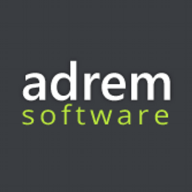

NetCrunch and Cisco Provider Connectivity Assurance are competing products in network management. NetCrunch seems to have the upper hand in pricing and customer support, while Cisco offers more robust features.
Features: NetCrunch provides comprehensive network monitoring, automatic network mapping, and integrated alerting systems. Cisco Provider Connectivity Assurance includes advanced assurance capabilities, real-time diagnostics, and extensive connectivity checks.
Room for Improvement: NetCrunch could enhance its feature set further to compete with more complex environments, improve integration with third-party applications, and expand its diagnostics capabilities. Cisco Provider Connectivity Assurance might improve its user interface for simplicity, reduce setup complexity, and minimize resource demands.
Ease of Deployment and Customer Service: NetCrunch offers straightforward deployment and strong support services, ensuring quick setup and issue resolution. Cisco Provider Connectivity Assurance requires more setup time but is supported by Cisco's extensive customer service infrastructure.
Pricing and ROI: NetCrunch is recognized for competitive pricing and favorable ROI, appealing to budget-conscious buyers. Cisco Provider Connectivity Assurance involves higher initial costs but provides significant long-term value with its feature-rich platform, often justifying the investment for larger enterprises.
| Product | Market Share (%) |
|---|---|
| Cisco Provider Connectivity Assurance | 0.7% |
| NetCrunch | 0.4% |
| Other | 98.9% |

| Company Size | Count |
|---|---|
| Small Business | 14 |
| Midsize Enterprise | 6 |
| Large Enterprise | 9 |
Cisco Provider Connectivity Assurance is known for its user-friendly approach to network analysis and performance monitoring. It excels in real-time diagnostics, helping organizations quickly resolve network issues and optimize performance effortlessly.
Cisco Provider Connectivity Assurance focuses on comprehensive network troubleshooting and performance monitoring, assisting in identifying bottlenecks and analyzing applications. Real-time data collection and evaluation ensure IT infrastructure efficiency. With active monitoring of latency, jitter, and throughput, users maintain smooth operations across multiple sites and applications. While highly effective, improvements in data handling, protocol support, and dashboard aesthetics are suggested to enhance user experience.
What are the key features of Cisco Provider Connectivity Assurance?In industries such as telecommunications and finance, where network reliability is crucial, Cisco Provider Connectivity Assurance offers critical network performance insights. It supports high-demand environments by providing data-driven decisions, ensuring infrastructures handle increased loads efficiently.
NetCrunch is an all-in-one network monitoring platform designed for hybrid IT environments, offering comprehensive agentless monitoring of thousands of devices across different technologies and platforms.
NetCrunch streamlines network management with automated discovery, configuration, and monitoring through rule-defined policies. It covers monitoring across various environments, providing real-time dashboards, dynamic views, and topology maps. With its versatile features, it supports diverse IT ecosystems efficiently. It offers a node-based license model that enables scalable deployment on-prem, self-hosted in the cloud, or in hybrid settings.
What are NetCrunch's most important features?NetCrunch is implemented across industries like healthcare and finance, ensuring comprehensive monitoring solutions that accommodate specific protocol and compliance requirements. It's tailored for seamless integration into various IT architectures optimizing monitoring capabilities tailored to industry standards.
We monitor all Network Monitoring Software reviews to prevent fraudulent reviews and keep review quality high. We do not post reviews by company employees or direct competitors. We validate each review for authenticity via cross-reference with LinkedIn, and personal follow-up with the reviewer when necessary.